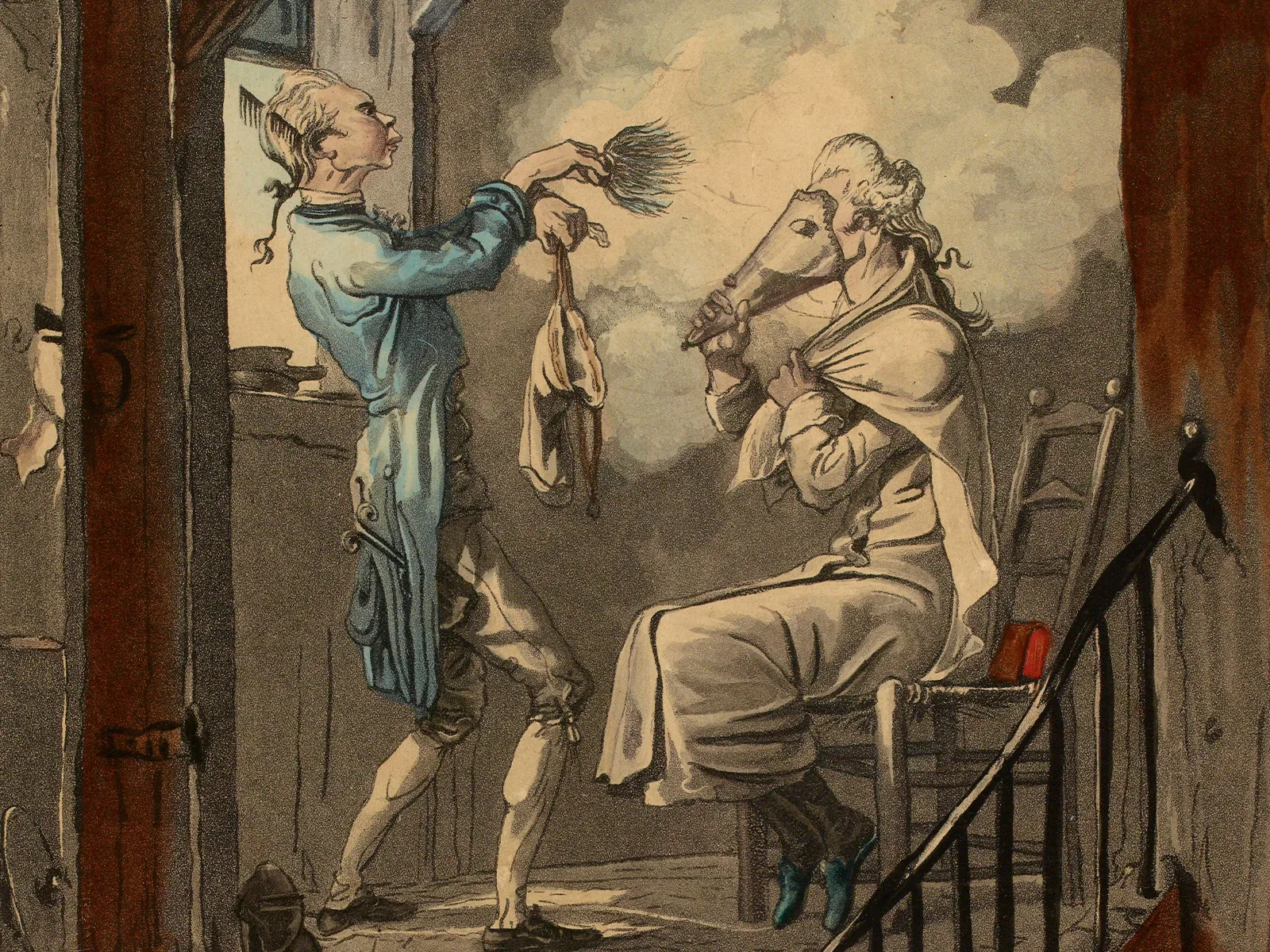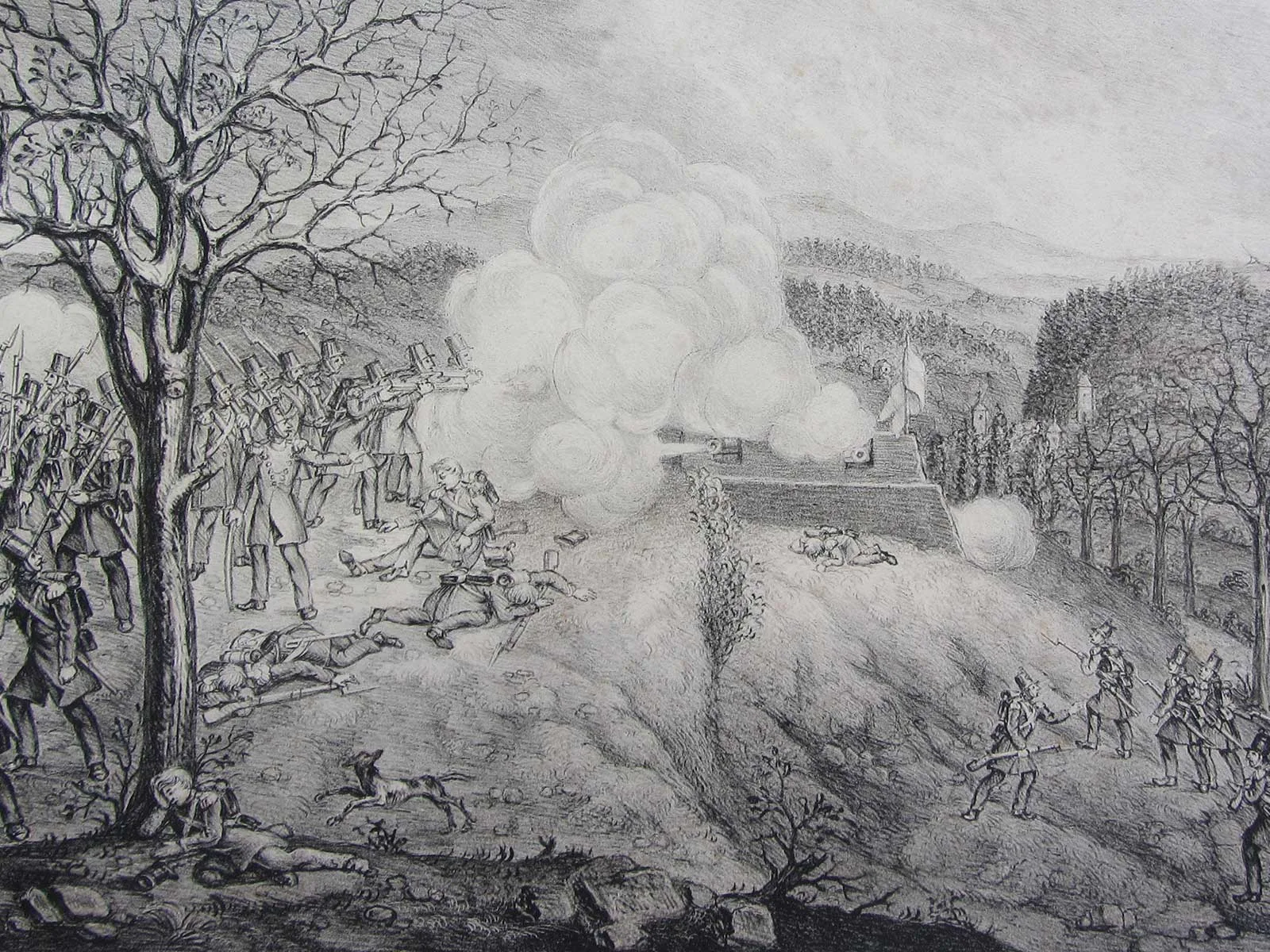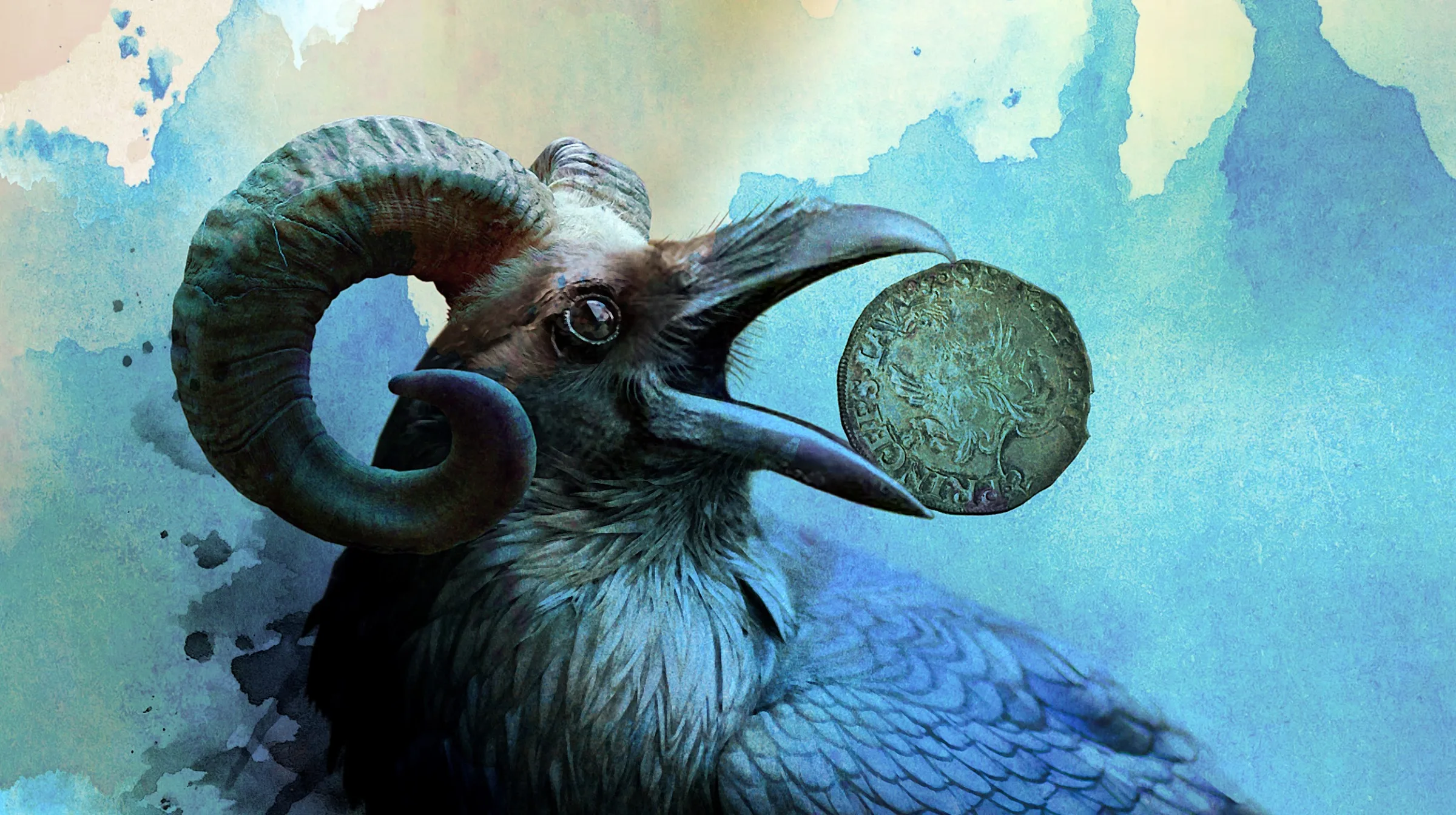
Switzerland and its money
Before 1850, people in Switzerland used to pay with fat men, horses or cornutos. The Swiss franc has only been the single national currency since 1850. A peek into the wallets of days gone by.
Switzerland has had the same currency, the Swiss franc, since 1850 – that is, shortly after the modern state was founded in 1848. This uniform coinage of francs and rappen and their multiples is somewhat deceptive – hiding the fact that a remarkable variety of coinage systems and associated value denominations was minted in the Old Confederacy. In the Ancien Régime, all 13 Confederate towns, with the exception of Appenzell Ausserrhoden, had their own mints. In many places in Switzerland payment could also be made with foreign coin types, and as early as the Middle Ages not only numerous bishoprics and imperial abbeys, but also dukes and counts had been granted the right to mint and issue coins. So it’s not surprising that over the course of time Switzerland has had a whole plethora of coins with different names that hardly anyone is aware of today. Did you know that in Switzerland you used to be able to pay with a fat man, or a horse? Or that in 16th-century Lausanne when you asked what the price was and received the answer ‘Cornuto!’, this was actually what you had hoped to hear, and not a term of abuse?
Some of the coin names that sound fantastical today were derived from the images on those coins: a ‘kreuzer’ featured a cross, a ‘cavallotto’ had a horseman, and a ‘testone’ had an image of a head. But the names of these coins were often changed, not least because of the linguistic boundaries. While the testone, first minted in Venice, no longer featured an image of a head in Switzerland and was therefore simply called a ‘dicke’ (fat man) due to the coin’s unusual thickness relative to its breadth, cavallotti, featuring a horseman – in Switzerland, mostly Saint Martin – were usually translated as ‘rösseler’ (horse) in German-speaking areas. The cavallotti minted in the Savoy region, on the other hand, were referred to as ‘cornuto’ (horned), because the winged crest on the obverse was misinterpreted as a set of horns.

A cornuto minted in the Diocese of Lausanne, early 16th century.
Swiss National Museum

Two Swiss francs, 1850.
Swiss National Museum
How the franc got its name
In addition to the images, the script embossed on the coins was also used as a reason to denote value denominations. The term ‘franc’ is derived from French coins that went by the name FRANCORVM REX, the French king’s title ‘King of the Franks’, with FRANCORVM often being abbreviated to FRANC. The ducat, a gold coin in wide circulation that was first minted in Venice in 1482, was also given its name this way: SIT T XPE DAT Q TV REGIS ISTE DVCAT (To You, Christ, dominion over this duchy is given) was embossed on the reverse of the first ducats. The name of the coin is thus derived from the Latin word for duchy.
But coins could also take their names from the places where they were minted. From the Late Middle Ages in large parts of Switzerland, for example, the haller or heller was minted as the lowest denomination coin. The name is derived from Schwäbisch Hall, where an important imperial mint had been in operation since the 13th century. The silver coins minted there also circulated in parts of Switzerland where the name ‘haller’ was eventually adopted for the region’s own small coins. The thaler, which in turn gave the dollar its name, also derives its name from a minting location. The rich silver deposits of Sankt Joachimsthal (now Jáchymov in the Czech Republic), discovered in around 1516, resulted from 1519 onwards in a substantial production of guldiners – silver coins to the value of a gold guilder. These soon became known as ‘Joachimsthaler’, later shortened to ‘thaler’. Even though guldiners had been minted in Switzerland since as early as 1493, the name ‘thaler’ subsequently also became established for these silver coins weighing around 29 grams.
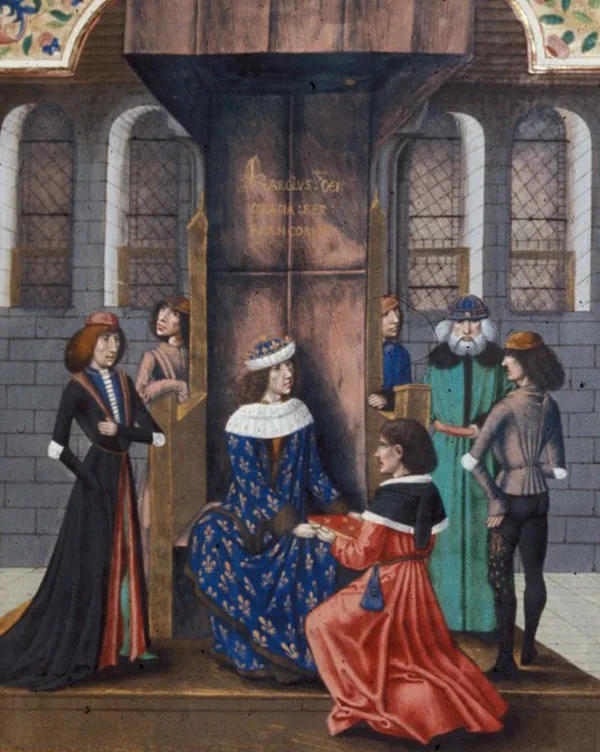
Godfather of the franc: the French king, here Charles V.
Wikimedia / British Library
Misunderstandings with naming
But we also owe some coin names to misunderstandings, or even abusive terms. The ‘angster’, a double pfennig coin first evidenced around 1340 in the Basel area, probably got its name from angustus, the Latin word for narrow, low, mean. Whether this was a reference to the thin coinage or its low value is no longer known. But the coin name was certainly misunderstood when, in Ticino and northern Italy, it was translated with the dialect word meaning ‘be alarmed or afraid’ (spagurás, spagüras). Endowed with a charming Swiss ending, this little coin now known as a ‘spagürli’ is encountered in 15th-century Swiss written sources. Spagürli were subsequently also minted in Lucerne and in the bishopric of Sion.
Coins from the mint in Freiburg im Breisgau, on the other hand, were deliberately misconstrued: an attempt at representing the imperial eagle on a coin backfired badly, and because of its appearance it was mocked as a raven. Thanks to the so-called rappen currency union, this raven (or ‘rappe’) – now simply the name of the coin, as the image was adapted from one place to the next – was also minted in Swiss mints, and eventually found its way into the coinage of modern Switzerland as one hundredth of a franc. The batzen, first minted in Bern in 1492, had an even more difficult start. Known as ‘rollbatzen’ (clod of dirt or dung) due to a forced 21% devaluation, in Bern it was soon reinterpreted as bätz (bear), which no doubt was also connected with the intermittent acceptance of this widely faked coin type.
As you can see, Switzerland and its money has always been a fascinating business. Seen in this light, it is almost boring that these days we only pay with francs and rappen. But you can still allow yourself a little smile next time you’re out shopping and you pay with Frenchmen and ravens.
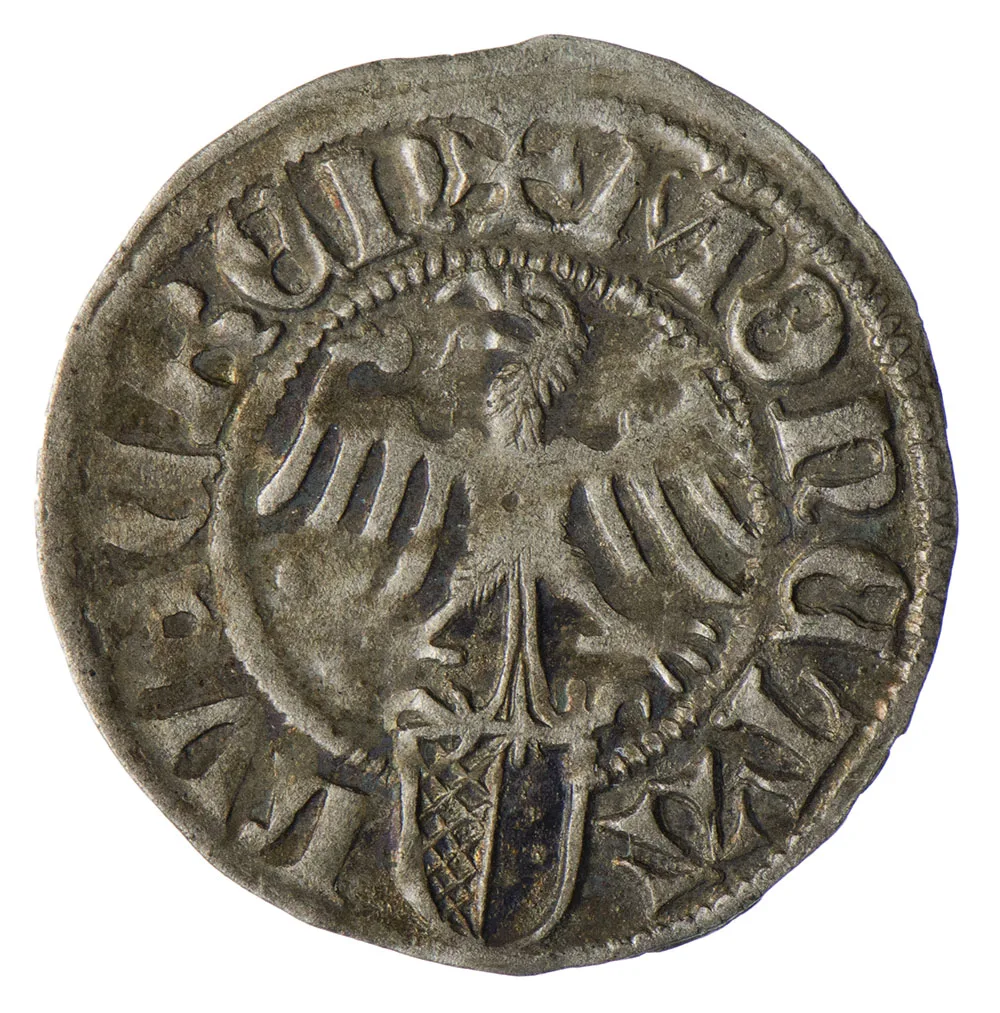
Spagürli issued by the City of Lucerne, early 16th century.
Swiss National Museum

A ‘rabe’ or rappen from Freiburg im Breisgau, second half of the 14th century.
Swiss National Museum


